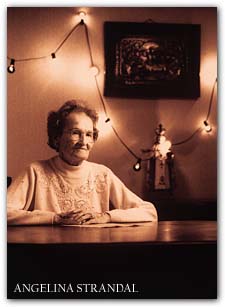Main Menu · Search ·Current Issue ·Contact ·Archives ·Centennial ·Letters to the Editor ·FAQs

 Surviving With Chaos
Surviving With Chaos
The traditional medical model of aging encourages us to think in terms
of degenerating organs-a bad heart, a failing liver, a cancerous pancreas.
But in the aging body, problems are often interconnected; the aging process
puts pressure on all these systems, resulting in geriatric syndromes like
incontinence, falls, depression, and dementia. None of these can be considered
the domain of a single hospital unit or organ-based specialty.
"The geriatric syndromes are complex problems that can't be boiled
down to one molecule or one cell," says Dr. Lewis Lipsitz, Usen director
of medical research at the Hebrew Rehabilitation Center for Aged and an
associate professor at Harvard Medical School. "We need better clinical
tools to predict a person's vulnerability to disabling illness and to measure
their frailty-that is, their impaired ability to adapt to stress."
Lipsitz is one of several Harvard researchers looking into the possibility
that one of the body's most important defenses against stress has an unlikely
name: chaos. On the face of it, the statement sounds absurd. Common English
usage maligns chaos, with associations of disorganization and disarray.
In fact, there's considerable beauty and structure in chaos. Chaos and the
fractal patterns it produces trace the irregular outlines of seashores,
mountains, and trees.
Likewise, the human body's organs and processes abound with chaotic fractal
patterns. Chaos is an important component of a healthy heartbeat, of strong
bones, of the branching structures of blood vessels, and of our natural
walking stride. This built-in irregularity expands our repertoire of responses
and allows us to adapt to the exigencies of everyday life. To remove the
element of chaos from human physiology would reduce our resiliency and adaptive
capacity; it would be about as productive as paving a coastline.
Lipsitz is also part of a group of researchers who have broken ground in
combining chaos and geriatrics. He and Beth Israel cardiologist Ary Goldberger
'70 have observed that as people age, heart function becomes much more regular
and predictable (see "Arias from the Heart," March-April, page
22). Chaos may be the basis of new, sensitive tools to study aging and disease.
"Most of medicine is very reductionist," Lipsitz says. "You
add up blood pressure, cholesterol, and throw in heart rate, and say someone's
going to get heart disease. It's an incomplete picture. But that's the way
we think.
"Now we're on the verge of using the underlying principles of chaos
theory to look at all areas of physiological functioning. For example, a
grandmother needs to go to surgery. We may be able to quantify her vulnerability
to complications through measurements of chaos. A loss of chaos in the heartbeat's
behavior might increase her risk of heart attack during surgery. Structural
patterns in bone are also chaotic, and the breakdown of these patterns may
tell us how fragile bones are, as opposed to how thin they are."
Gerontologist Jeanne Wei and Jeff Hausdorff, a Beth Israel bioengineer,
have already designed a system for measuring irregularities in the length
of walking strides that may predict the course of congestive heart failure.
The applications of chaos to the study of aging may tell us a great deal
more about the durability of people like Henrietta Aladjem and Ruth McShane,
or the many other people whose extended lifespans bear witness to their
ability to adapt.
All of us are going to learn a lot more about aging in the years to come-or
die trying. For most of us, the knowledge will come from personal experience,
and from those gone into the breach before us. The perceptions we build
and acquire will have tremendous influence on our futures. As Tom Perls
remarks, myths and generalizations about older people affect everything
about their lives. He's particularly concerned about the provision of adequate
medical care for chronic diseases of aging.
"Prostate cancer can take years to cause any serious problems,"
Perls says, "so some people tell their older patients, 'Look, you've
got prostate cancer, but you'll probably die of something else before it
kills you, so don't worry about it.' Well, if the patient's healthy and
lives into his 90s with the malignancy, he'll wish he'd had it taken care
of earlier. Everyone knows people in their 70s, 80s, and 90s who are in
great shape, and it's those people that you better take care of. You can't
fall into the paternalistic trap of thinking that you don't need to give
someone complete, aggressive care, just because he or she is old."
Now that researchers have begun to shine a light down the dark hallway of
aging, they are finding unexpected strength and resiliency in the elderly.
They are relaying the message that we need not acquiesce in the imagined
decrees of senility, that aging demands activity, participation, interaction,
exertion. The next century's beginning will be well stocked with elderly
people like Henrietta Aladjem, Ruth McShane, and Rose Silbermann. If we
wish to emulate their longevity, productivity, and durability, we need to
start listening and paying attention while we can.